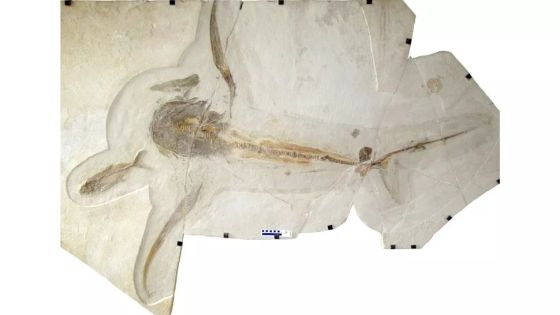A fossil of a 'winged shark' 93 million years ago is discovered

A fossil shark with a 'wing-like pectoral fin' larger than the body was found in Mexico. The fossil discovered is believed to be one of the sharks that lived about 93 million years ago.
Manta-like planktivorous sharks in Late Cretaceous oceans | Science
This eagle shark once soared through ancient seas near Mexico | Science | AAAS
https://www.sciencemag.org/news/2021/03/eagle-shark-once-soared-through-ancient-seas-near-mexico
[VIDÉO] Un 'requin aigle' nageait dans les mers du Crétacé | Université de Rennes 1 | Université de Rennes 1
https://www.univ-rennes1.fr/actualites/video-un-requin-aigle-nageait-dans-les-mers-du-cretace
The fossil of the shark 'Aquilola mna milarcae' discovered this time looks like this. It has a shark-like body with long pectoral fins. According to Roman Bros of the Center National de la Recherche Scientifique (CNRS), Aquilolamna milarcae has a pectoral fin that is about 1.9 meters long and has a pectoral fin longer than the body length (about 1.65 meters). .. For this reason, Aquilolamna milarcae is called 'eagle shark' by researchers.

The wing-like pectoral fins of Aquilolamna milarcae 'may have helped Aquilolamna milarcae behave by stabilizing her body and moving slowly,' the researchers said. Therefore, it is speculated that Aquilolamna milarcae was slow to move and mainly ate plankton.
'The Aquilolamna Another interesting point, my head is short, the nose is what obscure and mouth wide,' Bro said said, Aquilolamna milarcae is, sharks and rays belong

According to the research team, the organism that was the source of the current Elasmobranchii was unknown for a long time. However, the discovery of Aquilolamna milarcae suggests that the ancestors of rays may be Aquilolamna milarcae.

As mentioned above, the fossils found have revealed many things about Aquilolamna milarcae. However, the fossil discovered this time did not contain 'teeth'. 'Aquilolamna milarcae is certainly a remarkable discovery,' said Kenshu Shimada, a professor of paleontology at DePaul University. We need to find a good fossil, 'he said, pointing out that it is difficult to study the details of Aquilolamna milarcae from this discovery.
In addition, the research team is investigating that the fossil that is thought to be the 'tooth of the ancestor of rays' discovered in the 1990s is likely to be the tooth of Aquilolamna milarcae.

Related Posts:







